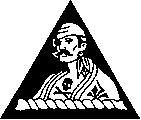

The 6th Bombardment Group (VH) is cited for outstanding performance of duty in armed conflict with the enemy during the period 9 July 1945 to 19 July 1945. As a part of a specially trained force charged with the strategic blockading of the Japanese Empire, this Group, in a series of valiant actions, laid mines with telling effect to help materially in the final destruction of the enemy's shipborne lines of communication. The execution of the mining missions involved extraordinary demonstrations of skill and extreme accuracy, since the location of all mines had to be pin-pointed to permit immediate assessment of results and eventual mine-sweeping operations by our own naval units. Despite the problems posed by a greatly accelerated program requiring combat flights every other night at levels of 6900 to 8600 feet over heavily defended enemy territory and of complete reliance upon radar for the utmost precision required in mining through undercasts, the 6th Bombardment Group superbly performed its assigned missions and was instrumental in causing an estimated sixty percent of the enemy ships to be sunk or damaged between March 1945 and August 1945. On the night of 9 July 1945, ninety-seven percent of the 31 aircraft airborne effectively mined their assigned target areas, with the loss of one aircraft. For tactical reasons, the aircraft were flown at reduced speeds and at low altitude over the heavily defended areas of Yawata and Shimonoseki Straits, encountering as many as twenty-five searchlights coned on a single aircraft, coordinated with heavy, intense and accurate flak. In spite of these overwhelming obstacles, the briefed courses were unerringly held and the mines were dropped in the exact assigned positions, confirmed by radar scope photographs. The 6th Bombardment Group again took off on the night of 11 July 1945 to open a new phase of the attack on the enemy's shipping. Traversing vast expanses of water, exposed for seven hours and ten minutes over enemy territory on one of the longest missions of the war, and heavily loaded with mines, the group flew to the remote shores of Korea to mine the harbors of Rashin and Fusan. Although handicapped by a solid undercast at the target area, and entirely dependent upon radar, the operation was executed with such unerring precision and pressed with such determination that radar scope photos again revealed ninety percent of the mines were sown in the briefed area. The 6th Bombardment Group set out again on 19 July 1945 to intensify and maintain the blockade in seven of the vital ports and harbors of Korea and Japan by further sowing and replanting of minefields. The determination of the crews to fullfill the assigned objective was again displayed when ninety-four percent of the mines airborne by thirty-one aircraft, were accurately dropped as briefed. The achievement contributed powerfully to the final and complete suffocation of Japan's shipping lanes. Inspired by a full realization of the strategic importance of their assignment and keenly determined to execute it with maximum effectiveness, the ground personnel and air crews of the 6th Bombardment Group coordinated their efforts into a smoothly functioning team. In the face of unusually difficult conditions and circumstances, which included the employment of unfamiliar and dangerous weapons and of techniques requiring the utmost care and precision, problems were attacked and overcome through spontaneous initiative, indefatigable zeal and effort, and long hours of unselfish devotion to duty. The combined efforts of all personnel of the 6th Bombardment Group were vital factors contributing to the ultimate success of the aerial mining blockade of the Japanese Empire, the severance of the enemy shipping lanes and the smashing of her power to continue the war. The achievements of the personnel of this group bring great honor to themselves, the United States Army Air Forces and to the entire military service. |
|---|